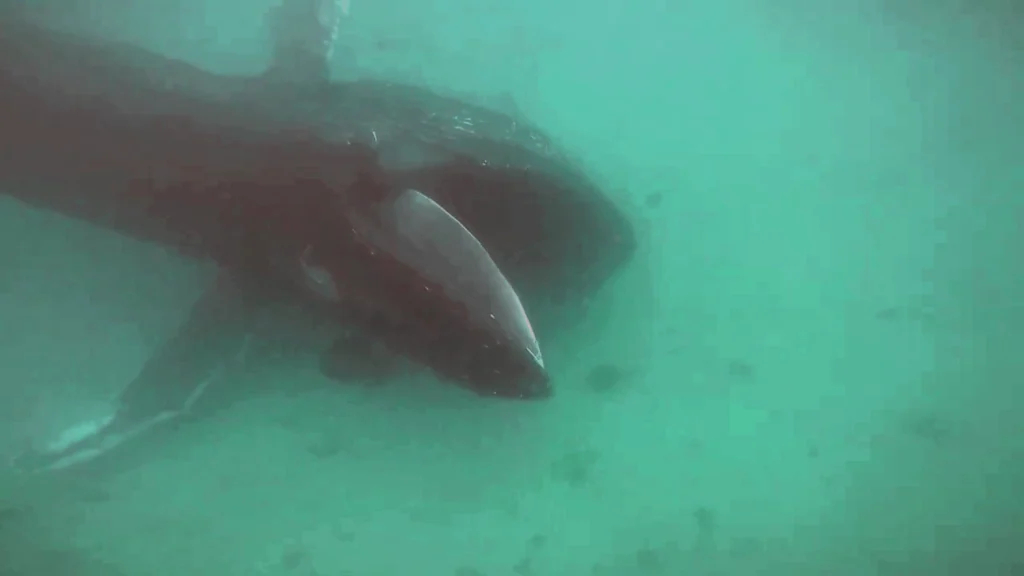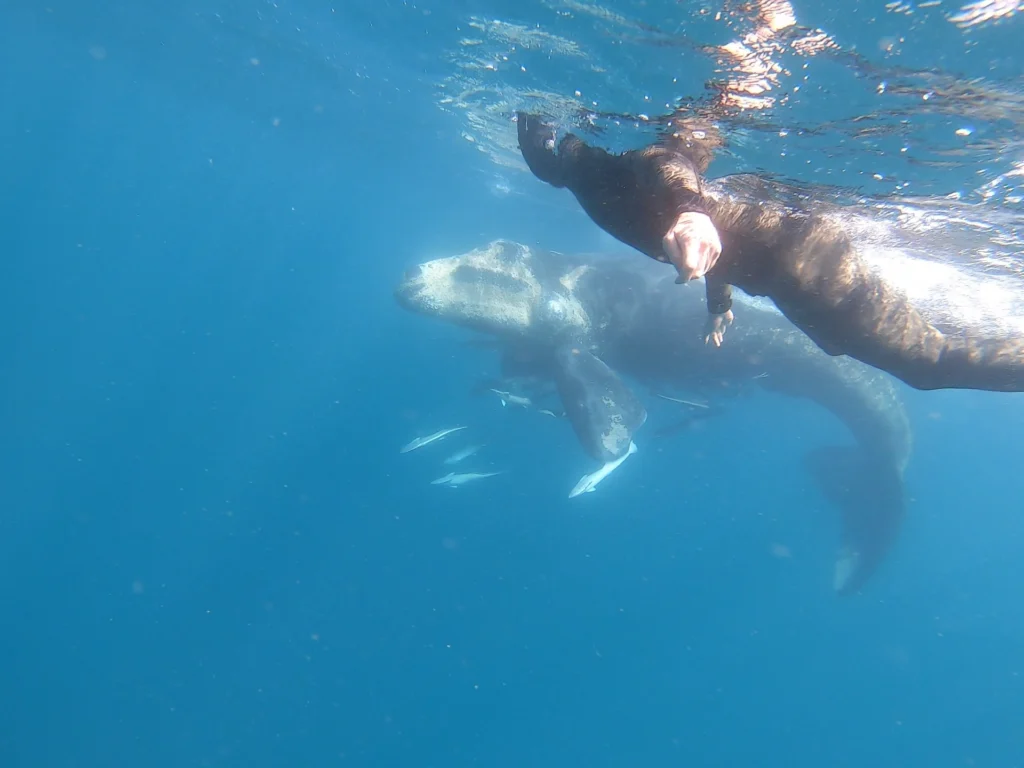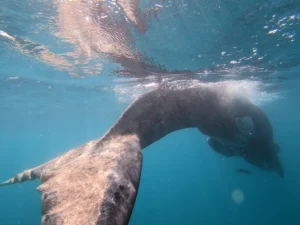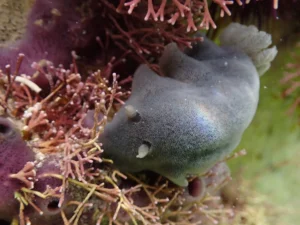Humpback whales (Megaptera novaeangliae) are among the most iconic species inhabiting the world’s oceans. Best known for their elaborate displays of behaviour, humpback whales exhibit considerable activity near the water’s surface, such as breaching and surface slapping with their flippers and tail (known as lobtailing). These actions are thought to constitute play, socialisation, communication, and for the removal of parasites.
These charismatic marine mammals are rorquals (belonging to the family Balaenopteridae), and are classified as baleen whales, distinguished by their unique feeding mechanism. Instead of teeth, whales belonging to this group have baleen plates made of keratin, a tough protein similar to human fingernails, which hang from their upper jaws in rows. These baleen plates act as a filter, allowing humpback whales to efficiently feed on vast quantities of small prey, such as krill and fish, by engulfing large mouthfuls of water and then using their tongue to push the water out through the baleen, trapping the prey inside. Unbelievably, the photo below of a humpback feeding was taken during a kelp forest snorkeling experience in Cape Town. They were feeding in water not much deeper than 5m over a sandy section outside of the kelp forest.

These effective hunters swim at speeds averaging between 8 and 15 km/h (5–9 mph), although they can accelerate up to 27 km/h (17 mph) when threatened. Humpback whale’s frequent depths of up to 80 metres (262 feet), but they occasionally embark on deeper dives, reaching depths of approximately 616 metres (2,021 feet). These deep dives serve various functions, including navigation, communication with other humpback whales, and facilitation of feeding activities.

Humpback whales are visually characterised by their long pectoral fins, which aid them in their annual migration, spanning from polar feeding grounds to warmer breeding waters. South Africa serves as a crucial waypoint on this migratory route, where humpbacks traverse nutrient-rich waters, engaging in feeding behaviours such as bubble-netting and lunge feeding. Humpback whales primarily feed on small fish, such as herring and anchovies, as well as krill. In turn, they face occasional predation by orcas, particularly calves and injured individuals.
As winter approaches, humpback whales reach their breeding grounds in subtropical regions along the eastern coastline of South Africa and Mozambique. Here, amidst the sheltered warm waters, they engage in courtship and mating displays, or give birth to live young. Humpback whale females reproduce every two years, with a gestation period lasting approximately 11 months.

Humpback whales are classified as ecosystem engineers, fulfilling an important role in the trophic food web, and contributing largely to oceanic ecosystem functioning and health. Through their feeding behaviour, they consume vast quantities of prey, assimilating essential nutrients like nitrogen and phosphorus into their bodies. When they excrete waste, they release faecal plumes rich in nutrients, which fuel the growth of phytoplankton, the foundation of the marine food web. Their migrations further contribute to nutrient transport across oceanic regions, redistributing resources. Moreover, whale falls represent unique and significant events in marine ecosystems, occurring when the carcass of a deceased whale sinks to the ocean floor. These carcasses create localised hotspots, providing abundant food and habitat for a variety of deep-sea organisms. Over time, the carcass undergoes a process of decomposition, during which nutrients are released into the surrounding environment, supporting the complex community of organisms at these depths.
While incredibly ecologically significant, the economic potential of humpback whales is also recognised through whale-watching tourism, which has evolved as a non-harmful alternative to whaling. However, despite their resilience, humpback whales continue to face anthropogenic threats such as entanglement in fishing gear, vessel strikes, noise pollution, and the myriad of threats associated with oceanic habitat degradation. Therefore, it is imperative to prioritise their conservation through collaborative efforts aimed at mitigating these threats, in a concerted effort to safeguard this iconic species.



